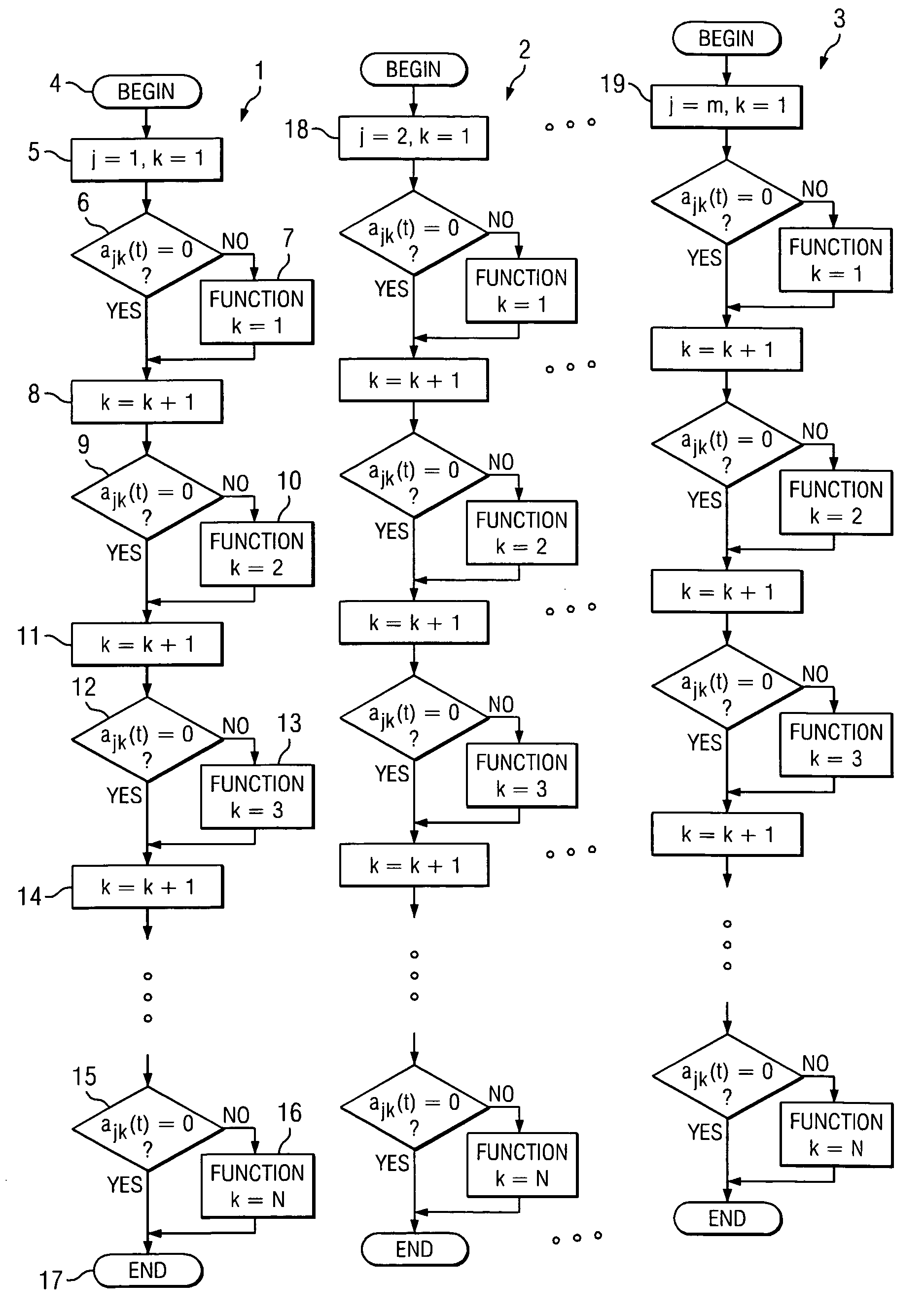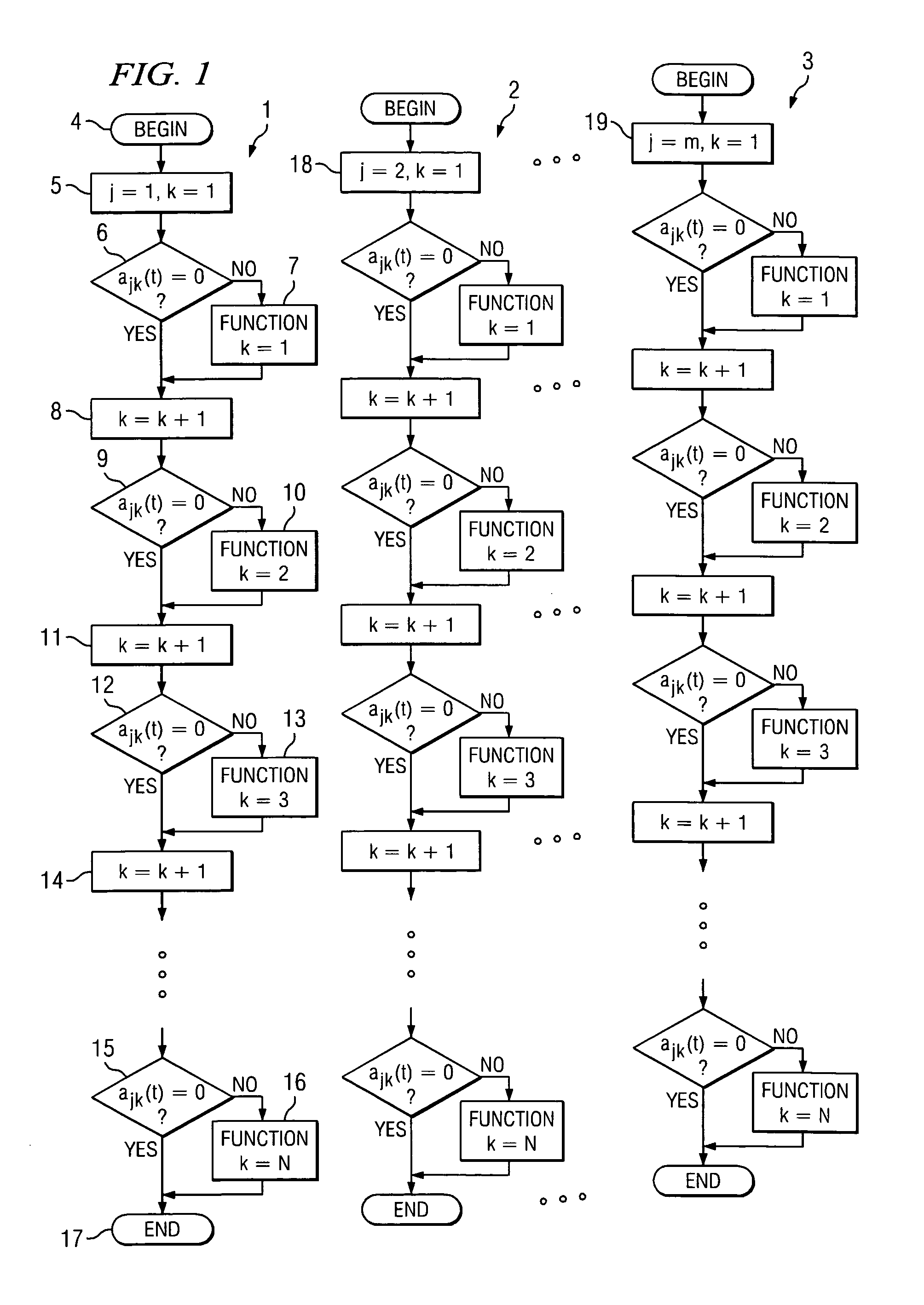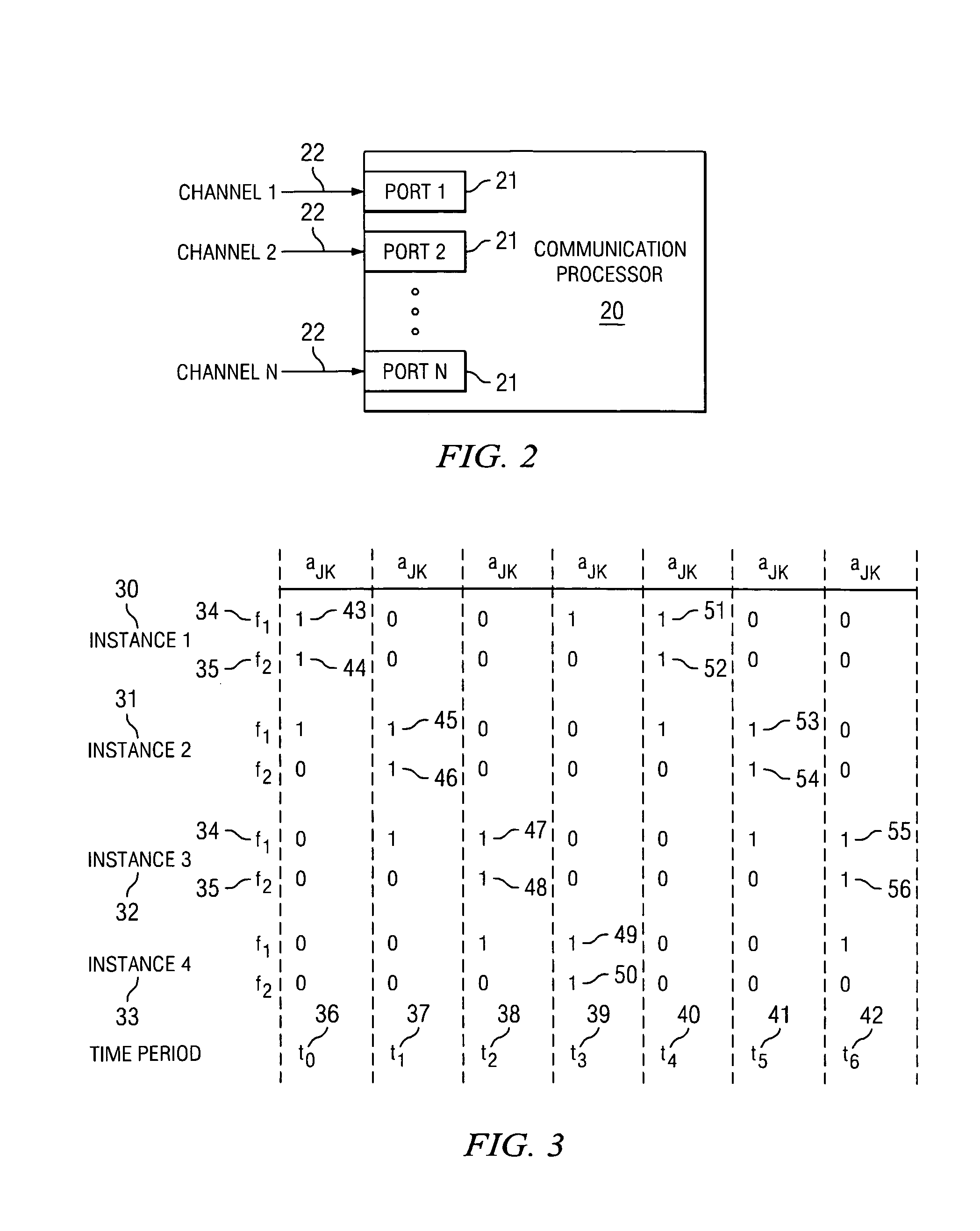Apparatus for resource management in a real-time embedded system
- Summary
- Abstract
- Description
- Claims
- Application Information
AI Technical Summary
Benefits of technology
Problems solved by technology
Method used
Image
Examples
Embodiment Construction
[0018]Referring now to FIG. 2, a communication processor 20 is interfaced with a plurality of communication channels 22 through its communication ports 21. Each of the communication channels 22 is capable of conveying an analog signal between the communication processor 20 and a channel terminating device. Upon receipt of an analog signal, the communication processor 20 creates a digital representation of the analog signal using numerous digital signal processing functions. Each channel port 21 is continuously monitored by the communication processor 20 to determine when a channel link has been established or extinguished on the communication channels 22. While a channel link exists, the communication processor 20 assigns its resources to functions that digitize and improve the digital representation of the analog signal. The assigned resources may be MIPS, memory, and other resources of the communication processor 20.
[0019]Referring now to FIG. 1, a software process 1–3 is executed...
PUM
 Login to View More
Login to View More Abstract
Description
Claims
Application Information
 Login to View More
Login to View More - R&D Engineer
- R&D Manager
- IP Professional
- Industry Leading Data Capabilities
- Powerful AI technology
- Patent DNA Extraction
Browse by: Latest US Patents, China's latest patents, Technical Efficacy Thesaurus, Application Domain, Technology Topic, Popular Technical Reports.
© 2024 PatSnap. All rights reserved.Legal|Privacy policy|Modern Slavery Act Transparency Statement|Sitemap|About US| Contact US: help@patsnap.com










